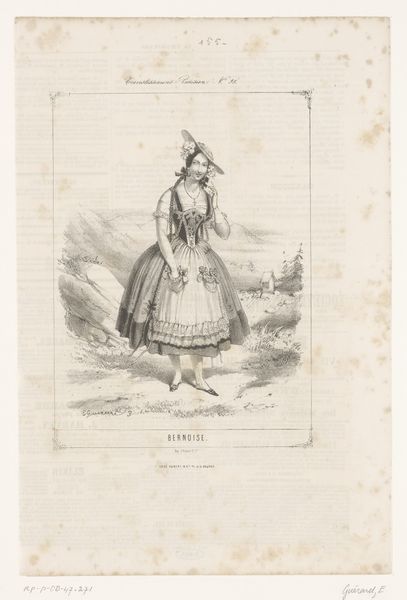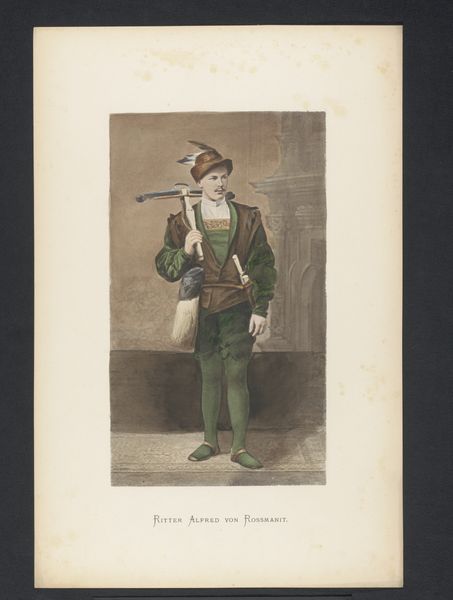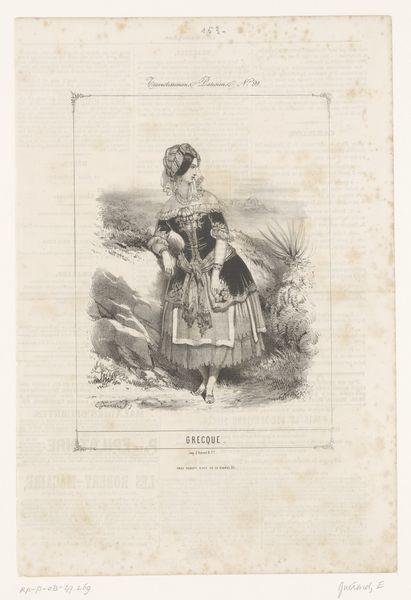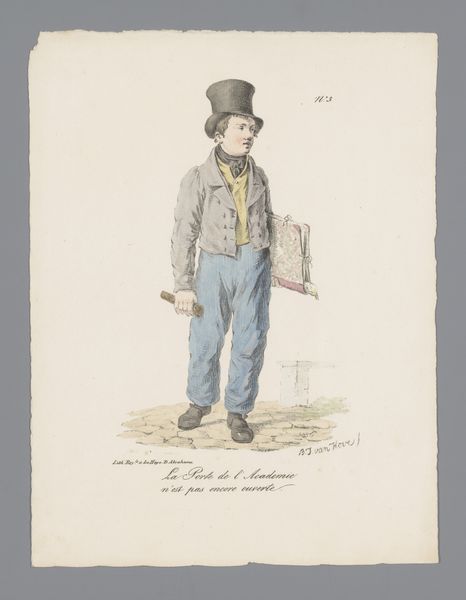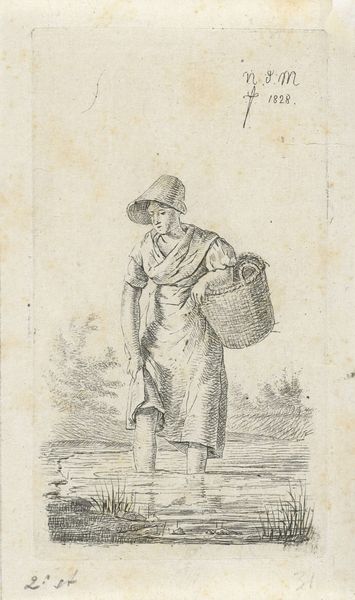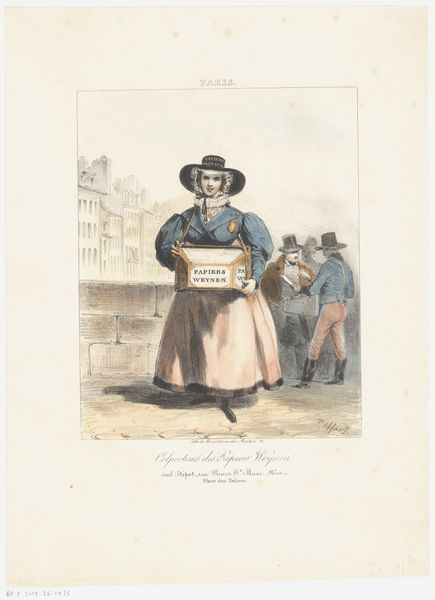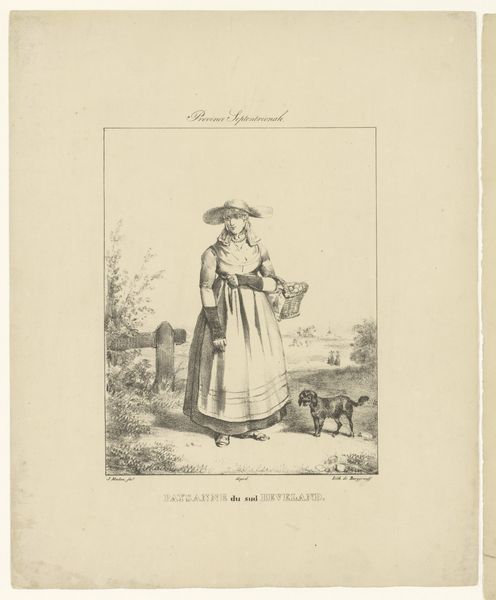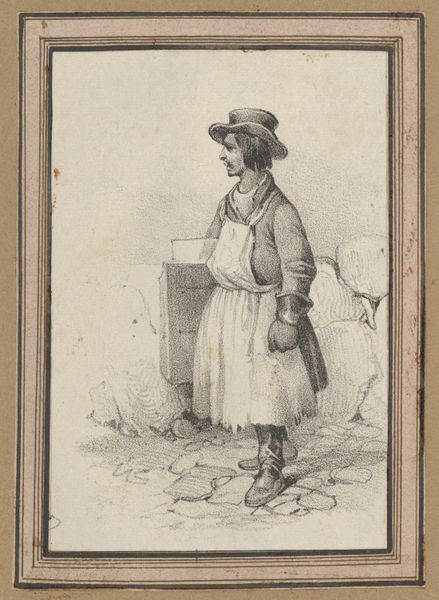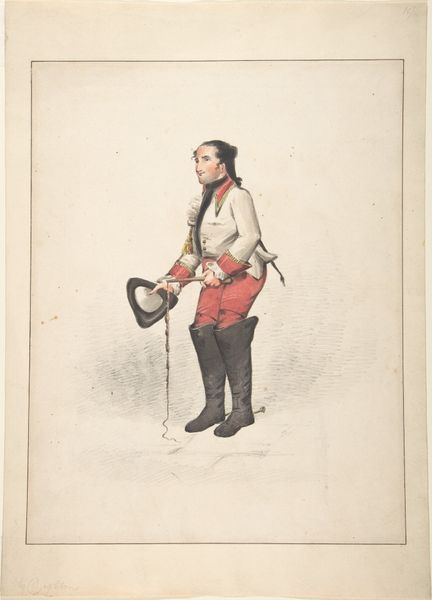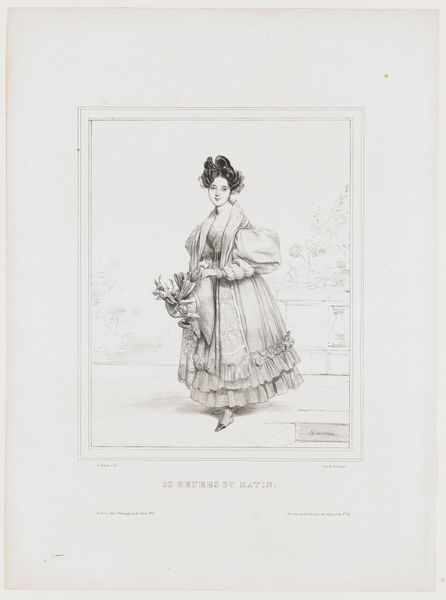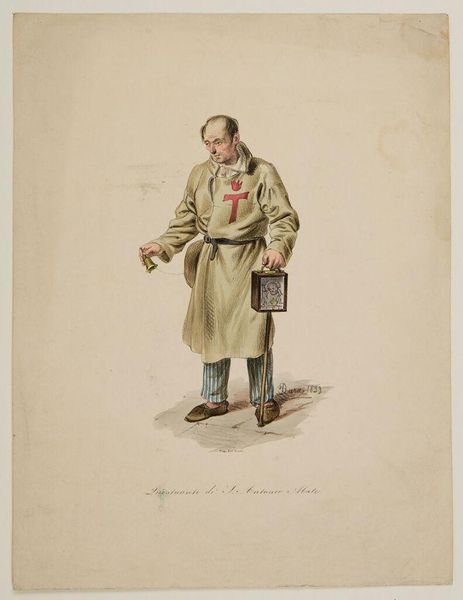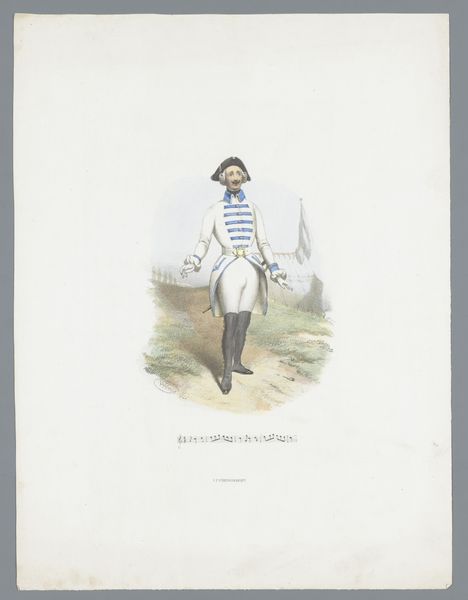
Dimensions: height 475 mm, width 307 mm
Copyright: Rijks Museum: Open Domain
Eusebio Planas created this print of a woman in traditional Swiss dress sometime in the 19th century, using lithography, a printmaking technique that relies on the chemical repulsion between oil and water. The material quality of this print is crucial to understanding its purpose; lithography allowed for mass production, enabling the widespread dissemination of images like this one. The print's texture is smooth and the lines are delicate, a testament to the artist’s skill in manipulating the medium. The colors, though muted, capture the details of the woman’s clothing, from the apron to the wooden bucket she carries. Consider the social context. Such prints served as visual records, documenting regional costumes at a time when industrialization threatened to erase local traditions. The choice of lithography highlights the tension between the desire to preserve cultural heritage and the forces of mass production that were reshaping society. This print challenges distinctions between fine art and documentation, inviting us to see it as a product of its time, deeply intertwined with social and economic change.
Comments
No comments
Be the first to comment and join the conversation on the ultimate creative platform.
